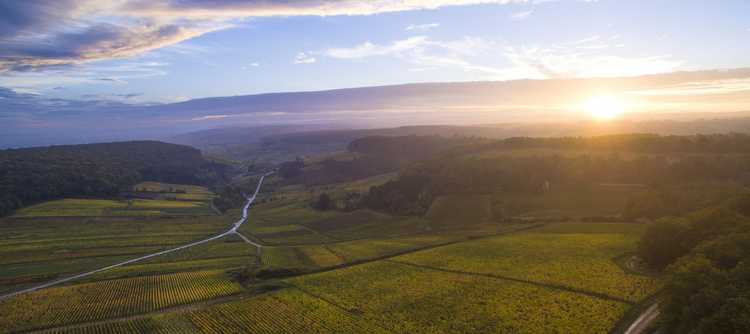To stay up-to-date with the BIVB, subscribe to news alerts
 Press releases
Press releases09/11/2017

Despite drawing on 2,000 years of history and a reputation for excellence that is the envy of many, the Bourgogne winegrowing region is not resting on its laurels. Winegrowers and négociants are continuing their efforts to improve quality and promote the terroir, and producing wines to reflect that.
Moreover, it is with a great deal of pleasure and not without pride that in June of this year, these same producers obtained validation from the Institut National des Appellations d’Origine (INAO) for the creation of two new AOCs: Bourgogne Côte d’Or and Vézelay.
The signature of 3 French Government Ministers on October 30, 2017, officialised this creation. These wines will be brought to market with the 2017 vintage!
Vézelay becomes a Village appellation
This is a wonderful promotion for Vézelay, one of the smallest Bourgogne appellations (66 hectares), which this year has been granted a Village appellation.
Vines were first grown in Vézelay during the Roman era, but unfortunately, they were almost completely destroyed by phylloxera in 1884. In 1875, they began a gradual comeback, and were granted the Bourgogne appellation in 1985. Then in 1998, the quality and uniqueness of this terroir were recognized and given a welcome boost when they were awarded the Bourgogne Vézelay Régionale appellation.
There are around 20 winegrowers currently producing the Vézelay appellation, including many newcomers to the industry, following in the footsteps of those who came before and working to translate the unique characteristics of the Vézelay terroir into wine. The INAO crowned this combined effort in June 2017, putting its signature on the specifications for this new Village appellation, the 44th in the Bourgogne winegrowing region.
These new specifications are rigorous, as they should be for a new Village appellation, with yields restricted to a maximum of 55hl/ha. And Vézelay is determined to continue expanding. Although far from the 1,000 hectares under vine in the Napoleonic era, this little winegrowing area, which previously covered 66 hectares, now has an additional 150 hectares of AOC Village available for planting, which will certainly delight fans of this 100% Chardonnay white wine with its pale yellow gold color. A smooth ride for this appellation whose name promises some exceptional heritage.
Bourgogne Côte d’Or: A highly-anticipated new member of the Bourgogne family
Industry professionals from the Côte de Beaune and Côte de Nuits are hailing the recognition of this Régionale appellation identified some 20 years ago. They were keen to highlight these plots of Bourgogne wine with their unique characteristics, and the INAO has made a favorable judgement in this respect.
To ensure this appellation enjoys the reach it deserves, it was necessary to give it a meaningful name that adds value... The name of Bourgogne Côte d’Or does not refer to the eponymous department, rather the area where the grapes are grown (see sidebar). Indeed, the production area extends across all the villages of the Côte de Beaune and Côte de Nuits, from south of Dijon to Maranges. This offers a potential of 1,000 hectares of Pinot Noir for reds and Chardonnay for whites. However, in one of those twists so common in this region, Bourgogne Côte d’Or is not, properly speaking, a new AOC. Integrated into the specifications of the Bourgogne Régionale AOC, it enjoys a Désignation Géographique Complémentaire (DGC), similar to Bourgogne Côte Chalonnaise or Bourgogne Côte d’Auxerre for example. There are currently 14 DGCs for the Bourgogne appellation, chiefly allowing for the differentiation of the various wine producing areas within the Bourgogne region, each with their own unique characteristics. This is just one more way to rediscover Bourgogne wines and their many, varied styles.
The creation of the Bourgogne Côte d’Or DGC comes with rigorous production conditions, guaranteeing a certain level of quality:
- As with Village appellations, plantation density is set at a minimum of 9,000 plants per hectare compared to a minimum of 5,000 plants per hectare for the Bourgogne appellation
- Target yields are 66 hl/ha for whites and 58 hl/ha for reds
- The minimum alcohol is also the same as for Village AOCs, at 11° for whites and 10.5° for reds
- The vines involved are all grown on the Côte, mainly on foothills, on the edge of Village appellations
See the video that celebrates the Bourgogne Côte d'Or appellation: